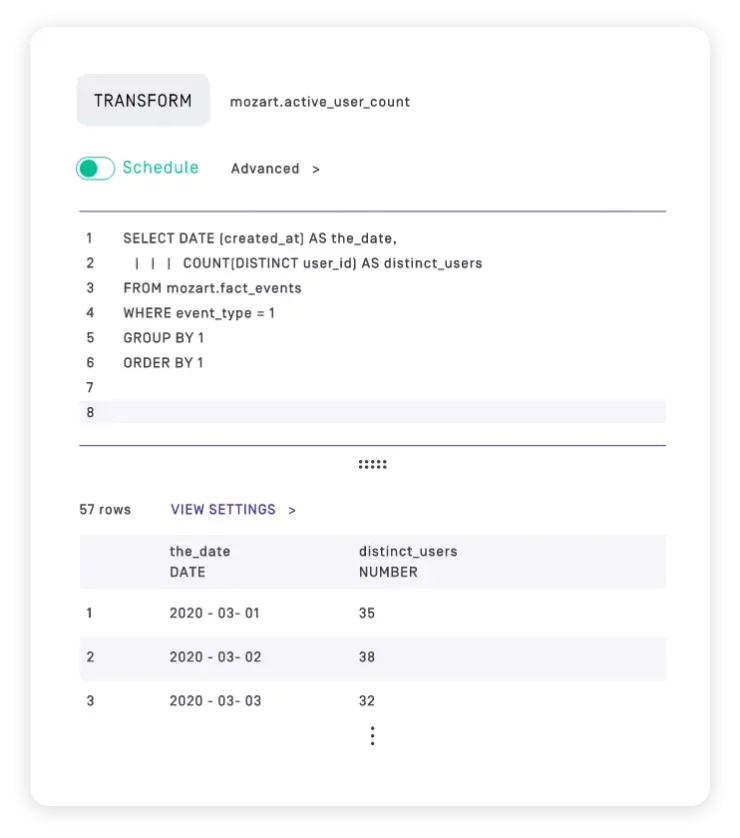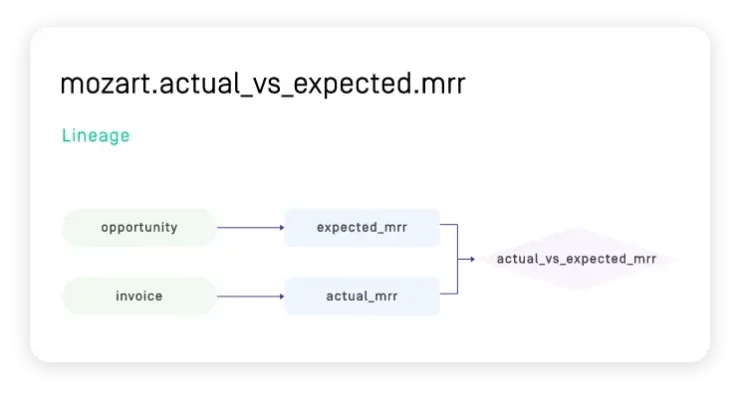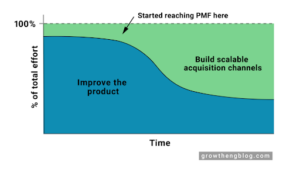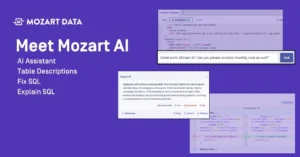Make insights accessible with data transformation
Organize, clean, and manipulate your data to create comprehensive reports, uncover insights, and make the most effective decisions to propel your business forward.
With our SQL-based data transformation layer and dbt Core integration you can:
- Create a universal source of truth
- Build trust across teams with clean, reliable data
- Combine disparate datasets for impactful analysis in one data pipeline
- Save time and money automating transformation tasks

Data transformation decreases time to insight: faster results, faster growth
With our data transformation tools, you can easily aggregate data, tackle data conversion problems, and organize your data for downstream use in your BI tool. Work with clean data and accurate information, and enable your staff to cut straight to what’s important without having to mess with scattered data or ask engineering for help.
Run a transparent business with a universal source of truth
After adequate data scrubbing, you can give every team access to the same reliable data, effectively preventing disagreements on definitions and accuracy so you can focus on results. Your data warehouse becomes the single source of truth powering your business intelligence (BI) tool. Don’t have a BI tool yet? Let us know, we can help.
Become more efficient
Automated data transformation, data conversion, and data cleaning enable you to save time and money. Schedule transforms to run when you need them to, like after the tables they depend on are synced with fresh data
How does our data transformation process work?
Our custom transformation tool is built around a SQL editor due to the robust capabilities and functionality it provides. Our dbt Core integration is a cost-effective alternative to dbt Cloud. Whether you’re an experienced data professional or just getting started on your data journey, our transformation tools are capable of helping you make your raw data analysis-ready.
How can you automate data transformation?
To transform data, you should write the transform and then use the editor to select how often you want it to run or define a custom schedule regarding frequency. With a single click, turn on snapshots to automatically run once daily, making historical data tracking over time straightforward.
How does the tool deal with large volumes of data?
We are managing hundreds of billions of data rows for our valued customers each month. Our systems are more than capable of handling any data transformation request and need. Our modern data platform is built on best-in-class tools.

Frequently asked
questions
Data transformation refers to the process of changing different data formats, values, and structures. For different data analytics projects, data may be transformed at two distinct stages of the pipeline.
This process refers to changing one data format to another in order to enable a file, database, or application to execute properly.
Data cleaning means removing or fixing incorrectly formatted, corrupted, incorrect, duplicate, or incomplete data within a given dataset. Clean data is reliable and ready for analysis.
Going through massive volumes of data and pinpointing every corrupted data file is time-consuming, and often, even the most skilled experts will fail to identify every single duplicate, incorrect, or corrupted file. In some cases, users know what issues will commonly arise but have no option other than manual correction without a data transformation process. We help our customers automate this process so they can focus on impactful analysis and improving their business processes.
Become a data maestro

Using Sigma with Mozart Data
Overview Hey there – we’re diving into an exciting walkthrough of how to integrate Sigma Computing (“Sigma”), a business

Customer Analytics for Startups
This post was written by guest author Trevor Fox. Every startup of a certain size, at a certain degree of


